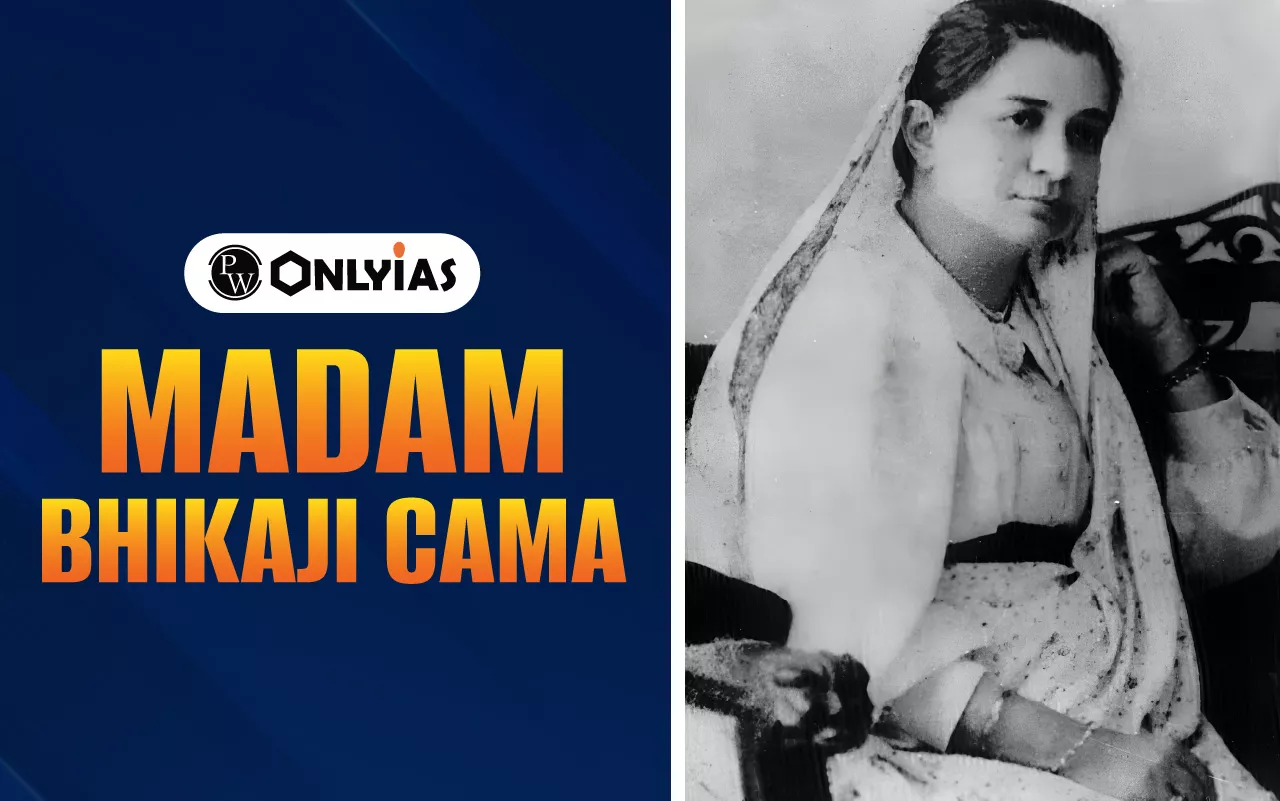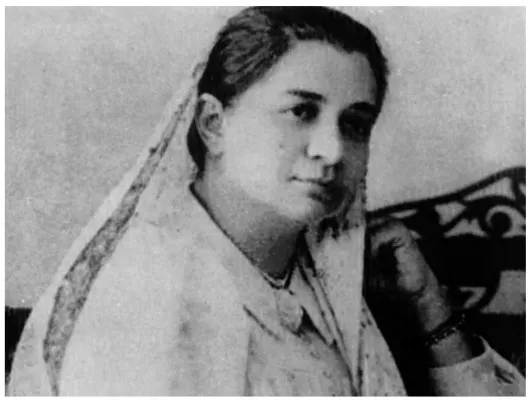Madam Bhikaji Cama was a fearless leader in India’s freedom struggle. Born in 1861, Madam Bhikaji Cama dedicated her life to fighting British rule and spreading awareness about independence. She raised the first Flag of Indian Independence in 1907 and inspired many with her courage, writings, and lifelong service to the nation.

Madam Bhikaji Cama was one of the most respected figures in India’s freedom movement. She was a brave woman who stood up against British rule when few dared to do so. She is also known as the first woman to hoist India’s flag. Cama has inspired generations of Indians to fight for independence with courage and pride.
Born in the 19th century, Madam Cama’s life was full of dedication, sacrifice, and patriotism. She played an important role in spreading India’s voice across the world. Over the period she is still remembered for her contribution to freedom and equality.
Madam Bhikaji Cama was a brave freedom fighter and social worker who worked for India’s independence. She was born on September 24, 1861, in Bombay (now Mumbai) in a Parsi family. Her full name was Bhikaji Rustom Cama.

She studied at Alexandra Girls’ English Institution and was a smart and kind student. During her time, India was under British rule, and many people wanted freedom. She got married to Rustom Cama, a rich lawyer who supported the British. But Madam Cama did not agree with him. She believed that India should be free, and she continued to work for her country’s independence with great courage.
In 1896, when a plague spread in Bombay, Madam Bhikaji Cama helped sick and poor people without fear. While helping others, she also got sick but slowly got better after a long time. This made her even stronger and more determined to help her country.
In 1902, she went to London for her treatment. There, she met famous Indian leaders like Dadabhai Naoroji and Shyamji Krishna Varma, who were fighting for India’s freedom. Talking with them made her more involved in the freedom movement.
Later, she moved to Paris, where she started the Paris Indian Society with S.R. Rana and Munchershah Godrej. This group helped Indian freedom fighters living outside India. Madam Cama also printed newspapers like Bande Mataram and Madan’s Talwar to tell people about India’s struggle for independence.
| Full Name | Bhikaji Rustom Cama |
| Date of Birth | September 24, 1861 |
| Place of Birth | Bombay (now Mumbai), India |
| Education | Alexandra Girls’ English Institution |
| Known As | First woman to hoist India’s flag |
| Major Contributions | Founder of Paris Indian Society, published revolutionary newspapers, raised the Indian flag at Stuttgart Conference |
| Date of Death | August 13, 1936 |
| Resting Place | Bombay (Mumbai), India |
Madam Bhikaji Cama was a fearless freedom fighter whose voice echoed across continents for India’s independence. Her life’s journey, marked by courage and conviction, continues to inspire generations.
| Madam Bhikaji Cama History | ||
| Year | Event | Description |
| 1861 | Birth of Madam Bhikaji Cama | Born on September 24, 1861, in Bombay (now Mumbai) into a Parsi Zoroastrian family. |
| 1885 | Marriage to Rustom Cama | Married Rustom Cama, a lawyer with pro-British views, leading to ideological differences. |
| 1896 | Plague Outbreak in Bombay | Volunteered to help plague victims; contracted the disease herself but survived. |
| 1902 | Travel to London for Treatment | Moved to London for medical care; met leaders like Dadabhai Naoroji and Shyamji Krishna Varma. |
| 1905 | Shift to Paris | Settled in Paris and co-founded the Paris Indian Society with other revolutionaries. |
| 1907 | Unfurled the Flag of Indian Independence | At the International Socialist Conference in Stuttgart, Germany, she raised the “Flag of Indian Independence,” becoming the first woman to hoist India’s flag. |
| 1910 | Speech in Cairo on Women’s Rights | Delivered a strong speech asking for women’s equality and participation in national causes. |
| 1914–1919 | World War I Period | Stayed under surveillance in Europe due to her anti-British activities; continued to support Indian revolutionaries. |
| 1935 | Return to India | Returned to Bombay after years in exile, living quietly due to poor health. |
| 1936 | Death of Madam Bhikaji Cama | Passed away on August 13, 1936, in Bombay, leaving behind a lasting legacy of patriotism. |
| 1962 | Posthumous Honour | The Government of India issued a postal stamp to honour her contribution to the freedom movement. |
| 1997 | ICGS Bhikaji Cama Commissioned | Indian Coast Guard named a patrol vessel in her memory, symbolising her strength and courage. |
The contribution of Madam Bhikaji Cama in the freedom struggle was wide and influential. She not only spread awareness about India’s situation in Europe but also helped many young revolutionaries working in secret.
Her key contributions include:
| Madam Bhikaji Cama Contribution to the Freedom Struggle | |
| Contribution | Details |
| Hoisting the Indian Flag in 1907 | Raised the “Flag of Indian Independence” at Stuttgart, Germany. |
| Publishing Newspapers | Published Bande Mataram and Madan’s Talwar to spread revolutionary ideas. |
| Paris Indian Society | Supported Indian revolutionaries in exile and helped spread nationalist ideas. |
| Advocacy for Equality | Spoke on gender equality and inspired women to participate in national movements. |
| Support to Education | Donated wealth to charitable trusts, including the Avabai Petit Trust, for the welfare of orphaned girls. |
Madam Cama also raised questions about women’s rights in her speeches. In one of her speeches in Cairo, she asked, “Sons of Egypt, where are your daughters? Where are your mothers and sisters?” This reflected her strong belief in gender equality.
Check Out UPSC CSE Books
Visit PW Store
The event where Madam Bhikaji Cama unfurled the flag in 1907 is one of the most celebrated moments in Indian history. She stood before an international audience in Stuttgart, Germany, and declared India’s right to freedom.
This act was historic because it happened forty years before India became free. The flag she held represented unity among all Indians, regardless of religion or region. It later became an inspiration for the Indian National Flag adopted in 1947.
Madam Bhikaji Cama is known as the first woman to hoist India’s flag for independence. Her action was a symbol of resistance and national pride. It showed that women were equally capable of leading the freedom struggle.
Her flag inspired future versions of the tricolour and was seen as a step towards the modern Indian flag we respect today.
Madam Bhikaji Cama passed away on August 13, 1936, at the age of 74. She returned to India a few years before her death after spending decades abroad working for the nation’s cause.
Her legacy continues to live on in modern India.
Madam Bhikaji Cama will always be remembered as the Mother of the Indian Revolution — a woman who gave her life for her country’s freedom.
Ready to boost your UPSC 2026 preparation? Join PW’s UPSC online courses today!
Madam Bhikaji Cama was an Indian freedom fighter and social reformer known for hoisting the first flag of Indian independence in 1907.
She was born on September 24, 1861, in Bombay (now Mumbai), India.
She co-founded the Paris Indian Society, published revolutionary newspapers, and spread awareness about India’s independence in Europe.
She unfurled the flag on August 22, 1907, at the International Socialist Conference in Stuttgart, Germany.
Madam Bhikaji Cama passed away on August 13, 1936.

<div class="new-fform">
</div>